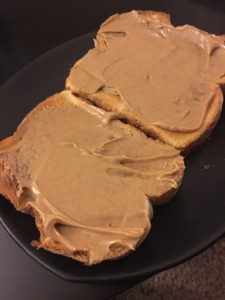
Should Peanut Butter Go in the Fridge or Stay in the Pantry?
Peanut butter is a household staple for many, and yet, a common debate arises: where should it be stored? Some argue for pantry storage, while others insist it belongs in the fridge. Understanding the difference between types of peanut butter and how they react to storage conditions can help settle this ongoing argument.
Pantry Storage: The Smooth and Convenient Choice
Most commercially processed peanut butters, such as those from popular brands, are designed to be shelf-stable. These products often contain added oils, sugar, and preservatives that help maintain their consistency and flavor at room temperature. The pantry is an ideal place for these varieties because it keeps the peanut butter soft, smooth, and easy to spread, even after it has been sitting for weeks.
Pros of Pantry Storage:
- Easier to Spread: Peanut butter stored in the pantry remains at a perfect consistency, making it simple to spread on bread, crackers, or fruit. No waiting for it to soften!
- Convenience: Keeping peanut butter in the pantry means it’s always ready for a quick snack or meal.
- Longevity: Thanks to preservatives in processed peanut butter, it can stay fresh for up to a year unopened and several months once opened.
However, some critics of pantry storage warn that peanut butter could lose its freshness over time. While spoilage is rare for processed peanut butter, oils can still separate and create a slightly messy texture that requires stirring.
Fridge Storage: Extending Freshness for Natural Varieties
For natural peanut butter lovers, refrigeration is often recommended. Natural peanut butter typically contains just peanuts and possibly salt, without added oils or preservatives. This makes it more prone to oil separation and faster spoilage if left at room temperature for too long.
Pros of Fridge Storage:
- Extended Shelf Life: Storing natural peanut butter in the fridge can significantly increase its freshness, preventing the natural oils from going rancid too quickly.
- Reduced Oil Separation: While some separation of oil may still occur, refrigeration slows this process, making the peanut butter more stable.
- Safe and Fresh: The fridge provides a cool environment that can protect your natural peanut butter from spoiling within a few weeks of opening.
The downside to refrigerating peanut butter—particularly natural kinds—is the texture. Cold peanut butter can harden, making it difficult to spread unless left out at room temperature for a while before use. This can be inconvenient, especially if you want a quick snack or spread.
Which is Better for You?
The decision ultimately depends on the type of peanut butter you have and your personal preferences.
- For Processed Peanut Butter: The pantry is usually the better option. Processed peanut butter has a longer shelf life and doesn’t need to be refrigerated to stay fresh. You can keep it soft, spreadable, and ready for use whenever you need it without any refrigeration hassles.
- For Natural Peanut Butter: The fridge is recommended. Natural peanut butter, free from preservatives and stabilizers, is more prone to spoilage if left out at room temperature. While refrigeration does affect texture, it’s the best way to ensure your peanut butter stays fresh and safe to eat.
The Verdict
Whether peanut butter belongs in the fridge or pantry depends largely on the type you’re using. If you prefer convenience and easy spreadability, keeping processed peanut butter in the pantry is perfectly fine. If you opt for natural peanut butter and want to preserve its freshness, the fridge is your best bet. Either way, you’ll still get to enjoy one of the most versatile and beloved foods in your kitchen.